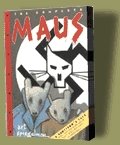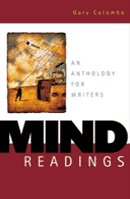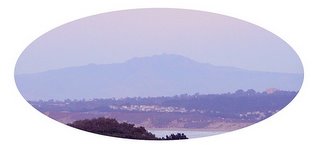Allied Artists
Allied Artists is devoted to artists, designers, writers, and patrons of the fine arts. It is a vehicle to promote the artist's voice in a democracy to stimulate debate, discussion, and awareness. Today more than ever your voice is important, and it must be heard because "there is no distinct edge between art forms, between artists' works and lives, between one artist's works and another's. Artists connect people to each other, people to the earth, and the present to the past and future."
About Me
- Name: jimperia
- Location: Milwaukee, Wisconsin, United States
Joseph Imperiale is a Humanities and Writing instructor at the Milwaukee Institute of Art and Design (MIAD). He has an MA in English literature and an MFA in Creative Writing & Film Studies from Chapman University. Several of his short stories have been published in small press anthologies. E-mail: jimperia@miad.edu / Milwaukee Institute of Art & Design: http://miad.edu/enter.php
Wednesday, March 29, 2006
Wednesday, March 08, 2006
HS121 Maus & Night

M A U S
http://www.nmajh.org/exhibitions/maus/maus2.html

http://www.nmajh.org/exhibitions/maus/maus3.html
Analysis and Commentary about
M A U S
http://www.northern.edu/hastingw/maus.htm
My Story Matters
An examination of how where we came from
determines where we are going
http://www.georgetown.edu/faculty/bassr/218/projects/mcgowan/main.htm
A Generation Removed?
A look at the relationship between Vladek and Art Spiegelman
http://www.georgetown.edu/faculty/bassr/218/projects/mcgowan/Maus.htm
on the Web
http://www.geocities.com/Athens/Atlantis/2671/
| Holocaust Education Websites | ||
| A Timeline of the Holocaust: A superb timeline of important dates in the gradual implementation and radicalization of the "Final Solution." The dates proceed from 1931 to 1961 (the trial of Eichamnn) and include links to historical photographs and explanatory information. | ||
| . | List of Extermination Camps: The links on this page provide detailed information about the extermination camps, including a number of historical photographs. | |
| List of Concentration Camps: The links on this page provide detailed information about concentration camps, distinguished from "extermination camps" because they did not have gas chambers. A number of these existed within Germany proper. | ||
| List of Camps: This is another, even more detailed listing of concentration and extermination camps in Europe during the Nazi period. Links include detailed maps and historical photographs. | ||
| Slide Show of Birkenau and Mauthausen: This is a very good slide show put together by Alan Jacobs. It walks you through these camps and explains the individual images (including some historical documents). You will here see again a number of the images offered by Claude Lanzmann in his Shoah. | ||
| A Normal Day in the Camps: An effort to imagine a typical day in a concentration camp. | ||
| Abe's Story: An interactive map documenting Abram Korn's progress in Nazi-occupied Europe over the course of the Nazi period. This site allows you to imagine yourself following one person's experience of the Final Solution. | ||
| Biography of Adolf Eichmann: Provided by the History Place. | ||
| Last Expression: Art from the Holocaust: Superb web site, which includes essays, maps, and virtual tours. |
Albion Reads Night by Elie Wiesel
http://albionlibrary.org/albionreads2006/albion_reads__night_by_elie_wies.htm

http://www.mjhnyc.org/museum_.htm

http://www.ushmm.org/

http://www.usc.edu/schools/college/vhi/
GLOBAL GENCIDE INDEX
http://law-ref.org/GlobalIndex/kw-crime_of_genocide.html
Friday, March 03, 2006
Saturday, February 25, 2006
Tuesday, January 17, 2006
EN100--Intro. to College Composition

* * *
EN100
Inquiry Journal Questions
Friday, September 02, 2005
Ponder This...
What is an Essay?


Yi-Fu Tuan (1930-) was born in China and later moved to the United States. Now a geography professor in Madison, Wisconsin, he has studied cultural differences between America and his native country. He states that he writes “from a single perspective—namely that of experience.” In this article published in Harper’s, he compares the way people in two cultures view their environments.
(1) Americans have a sense of space, not of place. Go to an American home in exurbia, and almost the first thing you do is drift toward the picture window. How curious that the first compliment you pay your host inside his house is say how lovely it is outside the house! He pleased that you should admire his vistas. This distant horizon is not merely a line separating earth from the sky, it is a symbol of the future. The American is not rooted his place, however lovely: his eyes are drawn by the expanding space to a point on the horizon, which his future.
(2) By contrast, consider the traditional Chinese home. Blank walls enclose it. Step behind the spirit wall and you are in a court yard with perhaps a miniature garden around a corner. Once inside his private compound you are wrapped in an ambiance of clam beauty, and ordered world of buildings, pavement, rock, and decorative vegetation. But you have no distant view: nowhere does the space open out before you. Raw nature in a such a home is experienced only as weather, and the only open space is the sky above. The Chinese is rooted in his place. When he has to leave, it is not for the promised land on the terrestrial horizon, but for another world altogether along the vertical, religious axis of his imagination.
(3) The Chinese tie to place is deeply felt. Wanderlust is an alien sentiment. The Taoist classic Tao Te Ching captures the ideal of rootedness in place with these words: “Though there may be another country in the neighborhood so close that they are within sight of each other and the crowing of cocks and barking dogs in one place can be heard in the other, yet there is no traffic between them; and throughout their lives the two people have nothing to do with each other.” In theory if not in practice, farmers have ranked high in Chinese society. The reason is not only that they are engaged in a “root” industry of producing food but that, unlike pecuniary merchants, they are tied to the land and do not abandon their country when it is in danger.
(4) Nostalgia is a recurrent theme in Chinese poetry. An American reader of translated Chinese poems may well be taken aback—even put off—by the frequency, as well as the sentimentality, of the lament for home. To understand the strength of this sentiment, we need to know that Chinese desire for stability and rootedness in place is prompted by constant threat of war, exile, and the natural disasters of flood and drought. Forcible removal make the Chinese keenly aware of their loss. By contrast, Americans move, for the most part, voluntarily. Their nostalgia for home town is really longing for a childhood to which they can return: in the meantime the future beckons and the future is “out there,” in open space.
(5) When we criticize American rootlessness, we tend to forget that it is a result of ideals we admire, namely social mobility and optimism about the future. When we admire Chinese rootedness, we forget that the word “place” means both a location in space and position in society: to be tied to place is also to be bound to one’s station in life, with little hope of betterment. Space symbolizes hope; place, achievement and stability.
(1)There is something uneasy in the Los Angeles air this afternoon, some unnatural stillness, some tension. What it means is that tonight a Santa Ana will begin to blow, a hot wind from the northeast whining down through the Cajon and San Gorgonio Passes, blowing up sand storms out along Route 66, drying the hills and the nerves to flash point. For a few days now we will see smoke back in the canyons, and hear sirens in the night. I have neither heard nor read that a Santa Ana is due, but I know it, and almost everyone I have seen today knows it too. We know it because we feel it. The baby frets. The maid sulks. I rekindle a waning argument with the telephone company, then cut my losses and lie down, given over to whatever it is in the air. To live with the Santa Ana is to accept, consciously or unconsciously, a deeply mechanistic view of human behavior.
(2)I recall being told, when I first moved to Los Angeles and was living on an isolated beach, that the Indians would throw themselves into the sea when the bad wind blew. I could see why. The Pacific turned ominously glossy during a Santa Ana period, and one woke in the night troubled not only by the peacocks screaming in the olive trees but by the eerie absence of surf. The heat was surreal. The sky had a yellow cast, the kind of light sometimes called "earthquake weather." My only neighbor would not come out of her house for days, and there were no lights at night, and her husband roamed the place with a machete. One day he would tell me that he had heard a trespasser, the next a rattlesnake.
(3) "On nights like that," Raymond Chandler once wrote about the Santa Ana, "every booze party ends in a fight. Meek little wives feel the edge of the carving knife and study their husbands' necks. Anything can happen." That was the kind of wind it was. I did not know then that there was any basis for the effect it had on all of us, but it turns out to be another of those cases in which science bears out folk wisdom. The Santa Ana, which is named for one of the canyons it rushers through, is foehn wind, like the foehn of Austria and Switzerland and the hamsin of Israel. There are a number of persistent malevolent winds, perhaps the best know of which are the mistral of France and the Mediterranean sirocco, but a foehn wind has distinct characteristics: it occurs on the leeward slope of a mountain range and, although the air begins as a cold mass, it is warmed as it comes down the mountain and appears finally as a hot dry wind. Whenever and wherever foehn blows, doctors hear about headaches and nausea and allergies, about "nervousness," about "depression." In Los Angeles some teachers do not attempt to conduct formal classes during a Santa Ana, because the children become unmanageable. In Switzerland the suicide rate goes up during the foehn, and in the courts of some Swiss cantons the wind is considered a mitigating circumstance for crime. Surgeons are said to watch the wind, because blood does not clot normally during a foehn. A few years ago an Israeli physicist discovered that not only during such winds, but for the ten or twelve hours which precede them, the air carries an unusually high ratio of positive to negative ions. No one seems to know exactly why that should be; some talk about friction and others suggest solar disturbances. In any case the positive ions are there, and what an excess of positive ions does, in the simplest terms, is make people unhappy. One cannot get much more mechanistic than that.
(4) Easterners commonly complain that there is no "weather" at all in Southern California, that the days and the seasons slip by relentlessly, numbingly bland. That is quite misleading. In fact the climate is characterized by infrequent but violent extremes: two periods of torrential subtropical rains which continue for weeks and wash out the hills and send subdivisions sliding toward the sea; about twenty scattered days a year of the Santa Ana, which, with its incendiary dryness, invariably means fire. At the first prediction of a Santa Ana, the Forest Service flies men and equipment from northern California into the southern forests, and the Los Angeles Fire Department cancels its ordinary non-firefighting routines. The Santa Ana caused Malibu to burn as it did in 1956, and Bel Air in 1961, and Santa Barbara in 1964. In the winter of 1966-67 eleven men were killed fighting a Santa Ana fire that spread through the San Gabriel Mountains.
(5)Just to watch the front-page news out of Los Angeles during a Santa Ana is to get very close to what it is about the place. The longest single Santa Ana period in recent years was in 1957, and it lasted not the usual three or four days but fourteen days, from November 21 until December 4. On the first day 25,000 acres of the San Gabriel Mountains were burning, with gusts reaching 100 miles an hour. In town, the wind reached Force 12, or hurricane force, on the Beaufort Scale; oil derricks were toppled and people ordered off the downtown streets to avoid injury from flying objects. On November 22 the fire in the San Gabriels was out of control. On November 24 six people were killed in automobile accidents, and by the end of the week the Los Angeles Times was keeping a box score of traffic deaths. On November 26 a prominent Pasadena attorney, depressed about money, shot and killed his wife, their two sons and himself. On November 27 a South Gate divorcée, twenty-two, was murdered and thrown from a moving car. On November 30 the San Gabriel fire was still out of control, and the wind in town was blowing eighty miles an hour. On the first day of December four people died violently, and on the third the wind began to break.
(6) It is hard for people who have not lived in Los Angeles to realize how radically the Santa Ana figures in the local imagination. The city burning is Los Angeles's deepest image of itself. Nathaniel West perceived that, in The Day of the Locust, and at the time of the 1965 Watts riots what struck the imagination most indelibly were the fires. For days one could drive the Harbor Freeway and see the city on fire, just as we had always known it would be in the end. Los Angeles weather is the weather of catastrophe, of apocalypse, and, just as the reliably long and bitter winters of New England determine the way life is lived there, so the violence and the unpredictability of the Santa Ana affect the entire quality of life in Los Angeles, accentuate its impermanence, its unreliability. The winds shows us how close to the edge we are.
Excerpt from Slouching towards Bethlehem, © by Joan Didion.
For more about how to read essays, click on the following link:
http://www.smpcollege.com/litlinks/essays/readessa.htm
# # #
Swearwords
Using swearwords is taboo in nearly every culture, so why do we still use them? Find out how words become swearwords.
http://people.howstuffworks.com/swearing.htm
Thursday, August 18, 2005
MIAD Happenings

An informal opportunity to recharge and get inspired. Bring a bag lunch and meet in the Todd Wehr Theater from 11:15-12:15 for the following presenters:
September 19th: Professors David Martin & Judith Harway (Lib. Studies)
* * *

Out of the Suitcase
The Mary L. Nohl Suitcase Fund Exhibit
August 23 - September 24
This exhibition is a selection of some of the diverse artists who have received travel awards from the Greater Milwaukee Foundation's Mary L. Nohl Suitcase Export Fund over the first two years of the program. In the first Suitcase cycle, fourteen artists received funds to travel to exhibitions or festivals in New York City, Los Angeles, Beijing, China, Sioux City, Iowa, Indianapolis, Indiana, Utica, New York, Park City, Utah, Schrattenberg, Austria, Beacon, New York, Santa Fe, New Mexico, and St. Paul, Minnesota. Not only did the awards enable Milwaukee artists to travel to exhibition venues across the United States and abroad, they also introduced diverse audiences around the globe to the excellent work being produced by artists here in Greater Milwaukee. Curated by Mark Lawson, Director of Galleries/MIAD and Bruce Knackert, Interim Director of INOVA/UWM. A companion exhibition of work by the 2004 recipients of the Nohl Fellowships will take place at the Institute of Visual Arts, October 14-December 11, 2005.
Artists included in the exhibition: Travis Graves, Steve Hough, Ariana Hugget, Xavier LePlae, Mat Rappaport, Roy Staab, Fred Stonehouse and Rina Yoon.
New Work from the Seventh Floor Studio
October 4 - October 29
Introducing the art work from the Bayview studio where several of MIAD's most talented alums work along with several other talented young artists. The Seventh Floor Studio is an moniker for twelve emerging Milwaukee artists working in a variety of styles and media from drawing and painting to printmaking and mixed media assemblage. They're brought together by their youth, professionalism, commitment to their work, and their support for each other. This is the first group exhibition featuring the work of this dynamic group of artists.
Artists included in the exhibition: Mary Beth DiBiasio, Steven Hambsch, Susan Kriofsky, John Lech, Dorota Biczel Nelson, Keith Christopher Nelson, Michael Roberts, Paul Stoelting, Oliver Sweet, Amanda Tollefson, and Lindsey A. Wolkowicz
roll-run-hit-run roll-tick
November 11 - December 17
The renowned installation artist Jin Soo Kim brings one of her ambitious pieces to Milwaukee along with additional other work selected by the artist. Jin Soo Kim will also be producing a major public art piece in Milwaukee's Historic Third Ward neighborhood. The exhibition presents a unique opportunity to view what when on behind the scenes in the creation of the public work, as well gaining a better understanding of the artist by viewing other works from her repertoire.
Diaspora and the Search for Resolution
January 17 - March 25 (dates for three part series)
These three exhibits and related programming are the inaugural segment of an ongoing annual exhibition program entitled "Culture in Transition". This annual series will focus on the diverse aspects of the rapid changes occurring in global culture. Such topics as traditional ideas reinterpreted in contemporary forms, digital media's impact on visual arts and design, sub-cultures and their relationship to the dominant culture, are but a few of the future topics under consideration. As a primary educational resource for new generations of visually creative individuals in the state, the Milwaukee Institute of Art & Design is committed to the exposition of critical issues in contemporary art and design. This series will provide an excellent vehicle for critical discourse on a diverse array of relevant cultural issues.
1. Liberation, Tradition and Meaning/Women on the Edge of Culture
January 17 - February 11
One of the greatest current challenges to humanity in the 21st century is the conflict of values and perceptions between western, Eurocentric and primarily Christian countries, and the middle-eastern, Islamic-oriented world. It is a complex collision of cultures that seem to exist in different eras, that have differing relationships to their religious underpinnings, and differing definitions of individualism and freedom. Through an exhibition titled Liberation, Tradition and Meaning/ Women on the Edge of Culture, the Milwaukee Institute of Art & Design will provide a visual forum about this collision of culture as experienced through a group of women artists of middle-eastern descent. The exhibition, artist visits and public presentations will serve as a catalyst for communication between cultures, encouraging dialogue and providing an opportunity for greater understanding, appreciation and respect. Among the artists in the exhibit is MIAD faculty member Fahimeh Vahdat, along with Zineb Sidera (London), Lida Abdul (Los Angeles) and Taraneh Hemami (San Francisco).
2. "The Beast is waiting…"
February 28 - March 25
Waldek Dynerman was educated as a painter at the Warsaw Fine Arts Academy but has since expanded his work to disciplines such as drawing, sculpture, printmaking, and very recently photography and video. His shifts between the disciplines is driven by the content resulting in work done in different media which compliments and informs each other with surprising cohesiveness. Amidst the several layers of content is a sense of sadness and sometimes despair possibly arising from his families history of war and survival during World War II in Poland. His immigration to America deepened the sense of loss and displacement. Even though dark in its core, Dynerman's work always contains an element of playful irony, and a hope for some level of positve resolution.
3. TBA (work in progress/negotiating the showing of a selection form a little known local collection of German Expressionist works/to be show concurrently with "the Beast is waiting".)
Senior Thesis Exhibition
April 21 - May 14
Innovative and insightful, MIAD’s Senior Thesis Exhibitions offer a glimpse of the next generation of artists and designers. Works in a wide variety of media and approaches to art and design will be presented by seniors from all of MIAD's nine majors. This annual event has become one of the most exciting exhibitions of the spring season.




